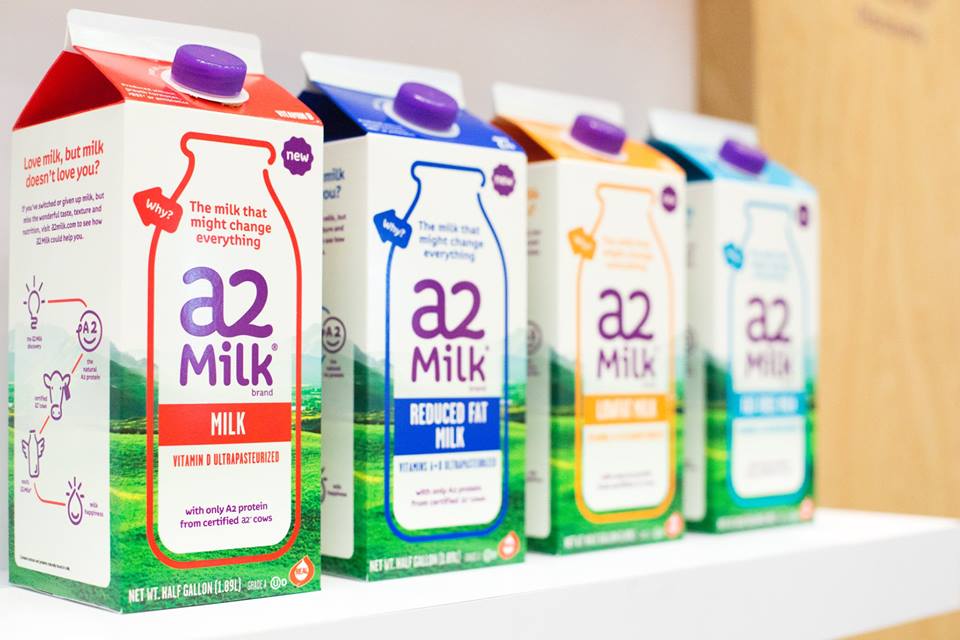Data from IRI and SPINS provided to FoodNavigator-USA for our special edition on dairy trends (going out Thursday June 25 to FoodNavigator-USA newsletter subscribers), also shows strong growth for the fermented dairy drink kefir, goat's milk, and yogurts for babies and young children.
CONVENTIONAL CHANNEL: IRI Multi-outlet data
The first data-set below (IRI multi-outlet data from Chicago-based market research firm IRI) provides a picture of what is happening in conventional grocery stores, covering supermarkets, drugstores, mass merchandisers, club stores, dollar stores (excl Dollar Tree), and military commissaries, but not convenience stores or chains that don’t share data such as ALDI and Trader Joe’s.
Categories showing positive dollar sales growth, IRI multi-outlet data, 52 weeks ending May 17, 2015:
- Refrigerated butter/butter blends: Dollar sales +18%; unit sales +0.17%
- Refrigerated dairy cream: Dollar sales +9.49 %; unit sales +1.28%
- Refrigerated kefir: Dollar sales +7.69%; unit sales +5.63%
- Natural cheese: Dollar sales +8.36%; unit sales +2.29%
- Refrigerated half & half: Dollar sales +6.91%; unit sales 0.79%
- Powdered milk: Dollar sales +6.19%; unit sales +1.05%
- Refrigerated coffee creamer: Dollar sales +6.19%; unit sales +2.81%
- Yogurt drinks: Dollar sales +6.13%; unit sales +2.38%
- Sour cream: Dollar sales +5.85%; unit sales +0.49%
- Refrigerated whole milk: Dollar sales +4.94%; unit sales +2.32%
- Evaporated/condensed milk: Dollar sales +4.71%; unit sales +0.99%
- Ice cream: Dollar sales +3.21%; unit sales +0.6%
- Yogurt: Dollar sales +2.86%; unit sales -0.52%
- Cottage cheese: Dollar sales +1.82%%; unit sales -1.82%
- Processed cheese: Dollar sales +1.45%; unit sales -5.63%
Categories in negative territory:
- Frozen ice cream/ ice milk dessert novelties: Dollar sales -1.00%; unit sales -3.42%
- Refrigerated skim and low fat milk: Dollar sales -3.01%; unit sales -5.25%
- Margarines/spreads: Dollar sales -4.06%; unit sales -5.39%
- Ice milk/frozen dairy dessert: Dollar sales -5.49%; unit sales -7.44%
- Frozen yogurt/tofu: Dollar sales -10.18 %; unit sales -11.18%
NATURAL CHANNEL: SPINSscan Natural data
The second data-set (SPINSscan Natural data) provides a picture of what is happening in the natural food channel, covering sales of all UPC-coded products sold in the natural supermarket channel from full-format natural product supermarkets including the National Cooperative Grocers Association (NCGA) and the Independent Natural Food Retailers Association (INFRA), to small to mid-sized chains, plus independent and cooperative stores across the continental US. It excludes Whole Foods.
Categories showing positive dollar sales growth, SPINSscan Natural data, 52 weeks ending May 17, 2015:
- Butter: Dollar sales +26.1%
- Yogurt and kefir drinks: Dollar sales +19.4%
- Ice cream: Dollar sales +16%
- Kids and baby yogurt: Dollar sales +14.9%
- Packaged cheese: Dollar sales +14.5%
- Greek & specialty yogurt: Dollar sales +14.3%
- Milk: Dollar sales +14%
- Goat & other milk: Dollar sales +9.9%
- Cottage cheese: Dollar sales +9.9%
- Dairy yogurt quarts: Dollar sales +8.3%
- Non-dairy-yogurt & kefir: Dollar sales +3.5%
Categories in negative territory:
- Dairy yogurt cups: Dollar sales -1.8%
- Frozen yogurts: Dollar sales -16.4%
Growth opportunities in dairy
So where are the growth opportunities in the dairy aisle?
In a webinar hosted by the Midwest Dairy Association this week, VP business development Cindy Sorensen said that while liquid milk consumption continues to decline, milk is being used in new, fast-growing categories from ready-to-drink specialty coffees and breakfast-to-go drinks, to smoothies, yogurt drinks and lattes/specialty coffees at quick service restaurants.
Meanwhile, sales of value added milk (eg. lactose-free, high protein, extra calcium, grass-fed, gut-friendly) have increased 20% over the past three years, she claimed.
In the yogurt category, household penetration has increased significantly in recent years, with new opportunities in products with grains and oats, limited time flavors, products appealing to men, and whole milk products promising healthy indulgence.
US cheese consumption meanwhile, has tripled since 1970, said Sorensen.
Is the dairy case stuck in a timewarp?
As for retailers, more work needs to be done to make the dairy category easier to navigate for consumers, she said."While many grocery departments have been reinvented, the dairy case hasn't changed much in decades."
Trials with retailers have shown that segmenting the category according to usage occasions (eg. Pro-active health, On the Go) and cross merchandising dairy products with other products according to usage occasions (eg. Breakfast zone, Fuel your day, Dinner tonight) could increase sales significantly, she said.

Interested in new trends in the dairy market?
Tune into our FREE Dairy Innovation Forum on July 29, featuring execs from The a2 Milk Company, Tarte Foods, Yasso, good culture and Smari Organics.

